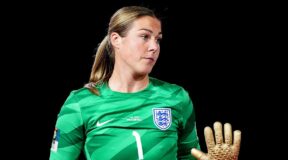Tim Hardaway knows stars when he sees them. Hardaway, a Hall of Fame point guard, battled against his share of them, including Michael Jordan, during a 14-year N.B.A. career.
So when he sees Stephen Curry and LeBron James encountering each other yet again in the N.B.A. playoffs, only one comparison comes to mind.
“Michael Jackson and Prince,” Hardaway said. “You must see that. That’s how big of a star they are. They command the crowd.”
James, with the Los Angeles Lakers, and Curry, with the Golden State Warriors, have the attention of the basketball world in the Western Conference semifinals. It’s not the biggest stage, like when they faced off in four straight N.B.A. finals from 2015 to 2018, as James played for Cleveland. But in the N.B.A., any stage they are on is the biggest one. Together and apart, they have for a generation defined a league whose individual stars can determine a team’s fate and shift the broader culture more than stars in other team sports can.
A playoff series headlined by Curry and James is the basketball equivalent of the Rolling Stones and the Beatles touring together. Or Muhammad Ali vs. Joe Frazier, except with a touch more gray and way more mutual respect. Or, in basketball terms, this is Magic Johnson vs. Larry Bird in the 1980s.
But this year’s matchup is especially significant. James, at 38, and Curry, at 35, are nearing the end of careers that have revolutionized basketball, with no clear heirs to continue the progression. Curry’s mastery of the 3-pointer ushered in a new era of long-distance shooting as a primary offensive attack, at all basketball levels. James, a powerful 6-foot-9 and 250 pounds, has been nearly impossible to duplicate physically, but he changed the way basketball stars viewed their own ability to bend teams to their will and create political and social capital for themselves off the floor.
Their playoff matchup this year may be the last time fans see two basketball players of this level of influence competing against each other in the postseason, which may be why ticket prices are breaking records for a non-championship series.
“What is it going to be like when those two guys — obviously two of the biggest names in the league, if not the biggest — are gone?” said Dell Curry, Stephen Curry’s father and a former N.B.A. player. “I think the league is very healthy as far as star power, but who takes the lead in that role?”
For much of the past two decades, James and Curry have been the N.B.A.’s largest draws, generating revenue through television ratings, sponsorships, and jersey and ticket sales. In 2009, when Golden State drafted Curry, Forbes estimated that the team was worth $315 million — the 18th most valuable N.B.A. franchise. Last year, after Curry led the team to its fourth championship in eight years, Golden State was ranked No. 1 with an eye-popping $7 billion valuation. Tamika Tremaglio, the executive director of the N.B.A. players’ union, said in an email that Curry and James “have fueled economic prosperity in the cities they play in.” “From an equity standpoint, our players are powerful, and Steph Curry and LeBron James are living proof of that truth,” Tremaglio said. New Orleans Pelicans guard CJ McCollum, the president of the players’ union, said, “What they’ve done is astronomical to our game in terms of viewership, in terms of globalizing the game.” He added, “Our league is in a better place because of it.” James’s presence has been a boon at each stop in his career, from the Cleveland Cavaliers to the Miami Heat and now to Los Angeles. He has become a symbol of modern fandom, in which many fans follow players and not teams. And Curry, whose pregame shooting routines draw even opposing teams’ fans, has shown how transcendent talent can test even the staunchest loyalties. “The basketball impact is like every kid especially that is coming into the league now, those are the two guys you want to be like,” said guard Isaiah Thomas, who has played with James and had to defend Curry. “I’ve seen younger guys come in the league and be in awe of these guys and they’re competing against them.” Jamal Crawford, who recently retired after two decades in the N.B.A., said Curry’s physique — 6-foot-2 and 185 pounds — made him seem like he was like “the boy next door” compared to bigger athletes. “He’s the guy — the kid — that every kid can look up to and say: ‘You know what? If I work hard on my game, if I work on my skills, if I believe in myself, I can accomplish unbelievable things,’” said Crawford, now a TNT analyst. “If you look at LeBron, you say, ‘Wow, he is a force of nature, something we’ve never seen before.’” Since they last met in the N.B.A. finals in 2018, Curry and James have expanded their influence on the culture. Curry spoke at the 2020 Democratic National Convention, and James endorsed Joe Biden for president that year and launched a voting rights group. They have been outspoken against gun violence, and Curry has helped with public health outreach during the coronavirus pandemic. James is the first active N.B.A. player to become a billionaire. And through production companies — James’s SpringHill Company and Curry’s Unanimous Media — both players have found opportunities to bolster their legacies, perhaps veering into hagiography. The documentary “Stephen Curry: Underrated,” directed by Peter Nicks and co-produced by Unanimous Media, debuted at the San Francisco International Film Festival last month and will stream on Apple TV in July. Curry, a top-10 draft pick out of Davidson, has won two Most Valuable Player Awards — one by unanimous vote, for the only time in N.BA. history. To get there he struggled through ankle injuries early in his career, but he is now widely considered the best shooter ever. In June, SpringHill, James’s company, is releasing the feature film “Shooting Stars” on Peacock, based on his high school team, St. Vincent-St. Mary High School in Akron, Ohio. It is an adaptation of a 2009 book by James and Buzz Bissinger. The projects underscore the two players’ vastly different paths to stardom. James was already a sought-after star as a teenager. Sonny Vaccaro, the former shoe-marketing executive, once flew James out to a Lakers playoff game in a private plane from Adidas while he was in high school. James was enthralled, recounted Jeff Benedict, who recently released an independent biography of James titled “LeBron.” He said James had long understood that “basketball isn’t just a sport.” “It’s like show business,” Benedict said. “It’s a very high form of public entertainment in the United States.” The cultural impact of Curry and James has also rippled out to the theater in independent plays unaffiliated with the stars. This summer, Inua Ellams, a playwright based in Britain, will debut a play called “The Half-God of Rainfall” at the New York Theater Workshop. The plot combines mythology and basketball: A half-god comes to Earth and becomes the biggest star in the N.B.A. Ellams, a longtime N.B.A. fan, said the character is loosely based on Curry and Milwaukee’s Giannis Antetokounmpo. In another play, Rajiv Joseph’s “King James,” which makes its Off Broadway premiere this month at the Manhattan Theater Club in New York, James looms but doesn’t appear, an indication of his influence. The piece chronicles the friendship of two Cleveland-based men who idolize James. Joseph, a Cleveland native and lifelong sports fan, said the idea for the play came to him after James won a championship with the Cavaliers in 2016. “It always felt to me, as I came to think about it, is he was almost like this deity who, when he smiled upon our fair little land in Cleveland, crops thrived and rivers ran clear,” Joseph said. “And then when he left, everything kind of dried up. Now, that is an exaggeration, but from a sports perspective, it certainly felt that way.” Ellams said the N.B.A. will feel a “cavernous” loss when Curry and James are gone. In February, James broke the league’s career scoring record, which had been held by Kareem Abdul-Jabbar since 1984. Last season, Curry broke Ray Allen’s career 3-pointer record in 511 fewer games. “It’s going to be half a century before anyone comes close to what they have done — what they are actively doing,” Ellams said. “This isn’t history in the making. This is punching holes out of mountains.” James is in his 20th season, far past the time when most players’ careers are over. He and Curry, in his 14th season, have staved off the need for the N.B.A. to fully transition into a new era of stardom. But those in and around the league are bullish about its future. “There’s always a next, even though we can’t see it,” said Candace Parker, one of the most accomplished players in W.N.B.A. history. She added: “That’s what we asked ourselves after Michael Jordan retired. After Magic and Bird retired. It just seems like there’s always that next coming.” Parker, who plays for the Las Vegas Aces and is an N.B.A. analyst on TNT, cited players like Antetokounmpo, Dallas’s Luka Doncic, Philadelphia’s Joel Embiid and Victor Wembanyama, the French prodigy expected to go first in this year’s N.B.A. draft, as possible torch carriers. Oscar Robertson, one of the best guards ever to play in the N.B.A., said part of the reason Curry and James were able to maintain their influence was because of how well they were still playing at their ages. “Some players when they are 29, they’re even too old. Some players when they are 34, they’re too old,” Robertson, 84, said. He added: “Guys try to rise to the occasion to play against these two athletes. And I’m so glad that these two athletes are meeting that challenge every time they go on the court.” But so far, no other current player in the N.B.A. — or likely anyone else in American team sports — is in the same orbit of stardom and influence as James and Curry. “We just have to enjoy these guys in the present because who knows how much longer they’ll play?” Crawford said. “But what we do know is we won’t see two like this ever again. So we should savor every moment.” Source: Read Full Article














